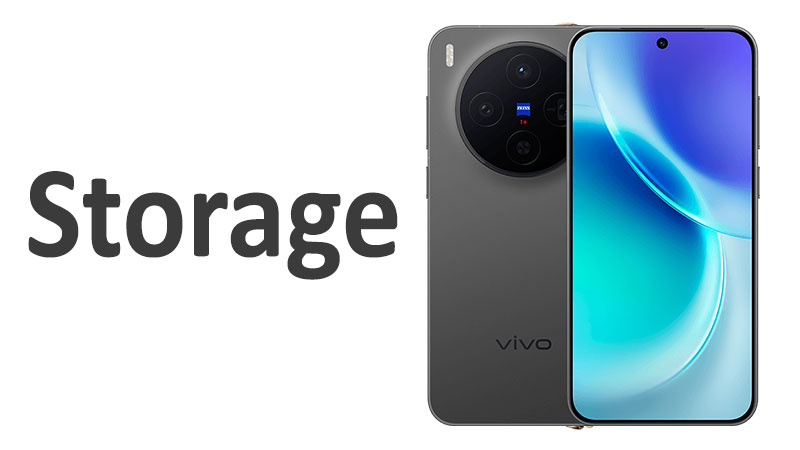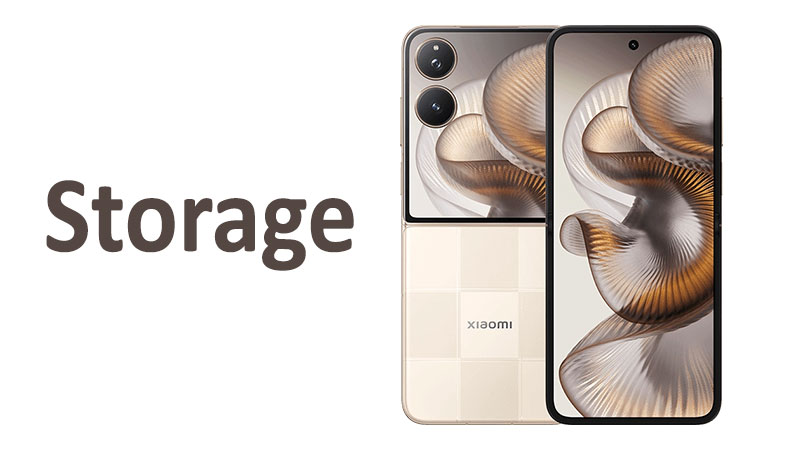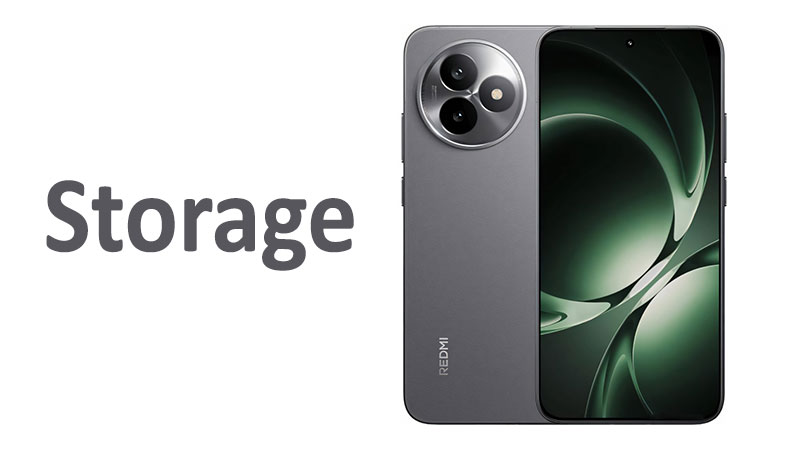The vivo X300 Storage capabilities are central to its flagship status. This article explores the capacity options. It also dives into the storage technology used. Choosing the right configuration impacts your daily smartphone experience. The vivo X300 offers generous storage tiers. These include 256GB, 512GB, and a massive 1TB option. Furthermore, it incorporates the cutting-edge UFS 4.1 storage standard. We will examine how these factors influence speed and usability. Understanding this technology is essential for any potential buyer. This comprehensive guide will help you select the ideal vivo X300 model.
Detailed Review of vivo X300 Storage Capacity
The modern smartphone user requires significant storage space. High-resolution cameras capture enormous video files. Mobile gaming demands large installation sizes. Cloud services offer solutions, but local storage remains critical. The vivo X300 meets these needs with three distinct capacity choices. These choices are tailored for different user groups.
The Entry Point: 256GB Configuration
The 256GB vivo X300 model serves as the base offering. It represents a substantial amount of internal memory. This capacity is perfectly adequate for the average user. This includes people who primarily use cloud storage. It works well for casual photography and light gaming.
Who Should Choose 256GB?
This option is best for users with moderate data needs. They might frequently back up photos and videos to the cloud. They generally download a manageable number of large apps. This capacity offers great value for the price. It still provides a fast and efficient experience.
Pros and Cons of 256GB
A key advantage is the lower cost. The 256GB model is the most budget-friendly choice. It makes the vivo X300 more accessible. However, the main disadvantage is the limitation it imposes over time. Heavy video recording quickly fills this space. This necessitates frequent file management.
Specialized Comparison: 256GB vs Previous Models
A few years ago, 256GB was considered premium storage. Today, it is an expected minimum for a flagship phone. Previous generations often started at 128GB. The move to 256GB as a baseline shows commitment. It recognizes the increasing size of modern mobile data. For example, older vivo models often offered 128GB as the starting point.
The Sweet Spot: 512GB Configuration
The 512GB vivo X300 configuration strikes an excellent balance. It offers double the capacity of the base model. This makes it suitable for power users and content creators. It provides ample space without the premium cost of the largest tier. Many industry experts consider 512GB the new standard.
Who Should Choose 512GB?
The 512GB option suits keen mobile photographers. It is also ideal for avid mobile gamers. These users keep extensive media libraries locally. They enjoy high-quality video recording at 4K or 8K resolution. This capacity reduces the stress of constant storage monitoring. It offers significant peace of mind for heavy daily use.
Pros and Cons of 512GB
The biggest pro is its versatility. It handles vast amounts of data very comfortably. It future-proofs the device for several years of use. Conversely, the cost is noticeably higher than the 256GB model. However, this price increase often justifies the added flexibility.
Specialized Comparison: 512GB vs Competitors
Many competing flagship devices also offer 512GB. The difference lies in the storage technology. The vivo X300 uses UFS 4.1. This speed advantage ensures that 512GB of space remains fast. It prevents performance slowdowns common in older, slower storage types. Competitors with older UFS standards will feel slower. This high-speed combination provides a smoother user experience.
The Maximum Option: 1TB Configuration
The 1TB vivo X300 is designed for the ultimate power user. This tier is an investment in unparalleled local storage. It caters to a very specific and demanding demographic. A 1TB capacity virtually eliminates storage concerns entirely.
Who Should Choose 1TB?
This massive capacity is for professional mobile videographers. It is perfect for those who shoot 8K video regularly. It also serves users who travel frequently without reliable internet access. They can store massive amounts of downloaded content. Developers who manage multiple large application environments also benefit. This capacity is the definition of future-proofing. It is the best choice for maximum longevity.
Pros and Cons of 1TB
The main benefit is unlimited space for almost anyone. You never need to worry about storage for years. This also protects the phone’s resale value later on. The major drawback is the significant price premium. Most users may find this much storage unnecessary. It represents a luxury for specialized tasks, not a necessity.
Specialized Comparison: 1TB in the Smartphone Market
A 1TB option distinguishes the vivo X300. It places it among the elite devices available. Only top-tier flagships offer this much storage. The combination of 1TB and UFS 4.1 is rare. It provides the best possible capacity and speed pairing. This feature is a key selling point for high-end consumers. Very few non-Pro models offer this tier.
The Power of UFS 4.1 Storage Type
Storage capacity is only half the equation. The type of storage memory is equally important. It dictates the speed of data transfer and access. This directly influences smartphone performance metrics. The vivo X300 utilizes Universal Flash Storage (UFS) 4.1. This is currently the fastest storage standard available in smartphones.
Technical Breakdown of UFS 4.1
UFS 4.1 is a significant leap forward in flash storage technology. It boasts impressive theoretical sequential read speeds. These speeds can exceed 4,200 MB/s. Write speeds are also incredibly fast. They often surpass 2,800 MB/s. This performance increase comes from advanced controller technology. It also uses more efficient data lanes. This design reduces bottlenecks significantly.
Specialized Comparison: UFS 4.1 vs UFS 3.1
The predecessor to UFS 4.1 was UFS 3.1. UFS 3.1 typically offered read speeds around 2,100 MB/s. UFS 4.1 effectively doubles this data transfer rate. This comparison shows a clear performance margin. The new standard improves efficiency and reduces power consumption. This benefits the phone’s overall battery life. It allows faster data movement for all system tasks.
Real-World Performance Impact
The speed of UFS 4.1 translates to tangible user benefits. Applications launch almost instantaneously. Large game files load in a fraction of the time. Transferring massive video files to a computer is much quicker. This efficiency is critical for multitasking performance. The system feels instantly responsive across all operations.
Gaming and UFS 4.1
Mobile gaming is one area where UFS 4.1 shines. It minimizes loading screens dramatically. This is vital for complex, open-world games. Textures and assets stream faster from storage to RAM. This provides a smoother and more consistent frame rate. It greatly enhances the competitive gaming experience.
File Transfers and UFS 4.1
Imagine moving a 100GB 8K video file. On older storage, this transfer could take minutes. With UFS 4.1, the time is reduced significantly. This improved speed boosts productivity for content creators. They spend less time waiting for file processing. Data backups become quick, routine tasks.
Pros and Cons of UFS 4.1
The clear pro is the exceptional speed. UFS 4.1 delivers incredible read and write performance. It makes the vivo X300 feel snappy and responsive. It is also more power-efficient than previous UFS generations. A potential con is the increased manufacturing cost. This cost is naturally passed on to the consumer. However, the performance justifies the premium.
Important Points for Readers and Buyers
Buyers must understand that UFS 4.1 is a major feature. It future-proofs the smartphone’s performance. Even if you choose the 256GB model, the speed remains top-tier. Capacity determines how much you store. The UFS 4.1 type dictates how quickly you access it. Never underestimate the importance of storage type. Fast storage improves every interaction.
Buyer’s Guide: Making an Informed Decision
Selecting the correct vivo X300 storage option requires careful thought. You should assess your current usage patterns first. Then, you should consider how your data needs might grow. This section provides a strategic approach to your purchase.
Assessing Your Current Data Needs
Start by reviewing your existing smartphone usage. How much storage are you currently using? This provides a baseline metric. This helps avoid buying too little or too much.
Photography and Videography Demands
If you shoot many photos, 256GB might work. If you shoot 4K or 8K video, however, storage fills rapidly. A five-minute 8K video can consume multiple gigabytes. Users focused on high-resolution video production should choose 512GB or 1TB. These capacities ensure uninterrupted recording sessions. High-quality media requires high capacity.
The Mobile Gaming Factor
Modern games like Genshin Impact or Call of Duty are huge. They often require 10GB or more per installation. If you are a heavy mobile gamer, 512GB is a smart choice. It allows you to keep several resource-intensive titles loaded simultaneously. This saves you the hassle of constant re-downloading.
Media Consumption and Downloads
Do you frequently download movies or playlists for offline viewing? A single high-definition movie can be several gigabytes in size. If you rely on offline media, the 512GB or 1TB options are safer bets. They give you the freedom to download without concern. Travelers and commuters often need more local space.
Longevity and Future-Proofing
Consider the expected lifespan of your new device. Most users keep a flagship phone for two to four years. Software updates and application sizes continue to grow. A larger storage tier delays the need for replacement. The 512GB model offers excellent long-term security. The 1TB model is the ultimate choice for future-proofing. It guarantees relevance for many years to come. Think about your needs two years from now.
Cost-Benefit Analysis across Capacities
The jump from 256GB to 512GB offers the best value. You get double the storage for a manageable price increase. This is the optimal investment for most consumers. The jump from 512GB to 1TB is a luxury upgrade. It is difficult to justify purely on a cost-per-gigabyte basis. Only professionals needing that space should absorb the extra cost. Prioritize the 512GB model for smart spending.
Important Considerations: System Overhead
Remember that the stated capacity is not the available storage. The operating system and pre-installed apps take up space. This is often referred to as system overhead. Approximately 20-30GB of space is typically used by the system. Factor this loss into your final capacity decision. For example, a 256GB model might only offer 230GB of usable space. This is a crucial detail to remember.
Cloud Storage Integration
You should not ignore cloud storage services. Services like Google Drive or Dropbox offer flexibility. They help offload less-frequently used files. However, accessing cloud data requires a reliable internet connection. Local storage with UFS 4.1 provides instant access. Rely on local storage for high-priority files and demanding applications. Use cloud storage for archival and backup purposes only.
Competitor Comparison: Feature Set
Many competitor devices offer similar capacity tiers. However, the vivo X300 distinguishes itself. It pairs its storage with other top-tier components. This includes its advanced processor and camera system. The UFS 4.1 acts as the crucial high-speed backbone. This backbone connects all the flagship features seamlessly. It ensures consistent, lightning-fast performance across the board. This holistic approach makes the storage offering superior.
Understanding Storage Degradation
All flash memory degrades over time. Continuous writes and erasures wear down the memory cells. The UFS 4.1 standard includes sophisticated wear-leveling algorithms. These extend the life and health of the storage chip. Choosing a larger capacity, like 512GB or 1TB, also helps. It distributes the writing load across more cells. This effectively slows down the degradation process over the years. This means a larger capacity can maintain peak performance longer.
Security and Data Protection
The UFS 4.1 standard often includes enhanced security features. These features operate at the hardware level. They ensure faster and more secure encryption and decryption. This keeps your sensitive data protected. High-speed encryption is crucial for privacy. The vivo X300 benefits from this built-in speed. It does not suffer a performance hit when encrypting data. Your data stays safe and quickly accessible.
The UFS 4.1 Advantage: Speed and Efficiency Deep Dive
The integration of UFS 4.1 is perhaps the biggest feature. It is a critical factor for peak mobile performance. Storage technology can often be overlooked by buyers. However, it affects everything from boot-up time to capturing burst photos. We will explore the technical benefits in more detail.
Sustained Performance and Thermal Management
Older storage technologies often suffer from throttling. They slow down dramatically during sustained transfers. This occurs when the chip overheats under heavy load. UFS 4.1 includes better thermal management features. This allows the vivo X300 to maintain high speeds longer. You can record lengthy 8K video clips without worrying about speed drops. This is essential for professional use cases.
Multitasking Efficiency
The speed of the storage influences how the processor manages multiple tasks. When you switch between a game and a video editor, data must move quickly. UFS 4.1 facilitates rapid memory swapping. This makes the operating system feel more fluid. The vivo X300 can handle complex application switching easily. This improves overall productivity for the user.
Comparison to SSDs in Desktop Computing
To understand UFS 4.1 speed, compare it to PC components. The sequential read speeds are comparable to high-end desktop SATA SSDs. This is remarkable performance for a tiny mobile chip. This level of speed was only available in dedicated computers recently. The vivo X300 brings this capability into your pocket. It is a true testament to mobile technology advancements.
Data Integrity and Reliability
UFS 4.1 is designed with robustness in mind. It offers better error correction capabilities than previous versions. This means your data is less likely to become corrupted. This is an important, often unseen, benefit of the technology. Reliability is built into the architecture. The vivo X300 relies on this integrity for its stable operation.
The Role of the Controller in UFS 4.1
The controller chip manages all data flow within the storage. UFS 4.1 features a significantly upgraded controller. This controller manages I/O operations more intelligently. It optimizes the queueing of read and write commands. This sophisticated management is key to achieving the listed speeds. It makes the vivo X300 feel instantly responsive.
Strategic Capacity Selection
Choosing the correct capacity is a personal financial and technical choice. Making the right decision ensures long-term satisfaction. We offer a final strategic breakdown for each capacity tier.
256GB: The Focused User
The 256GB option is highly efficient. It pairs high speed with the lowest entry price. Choose this if you use streaming services for all entertainment. It suits users who only need space for essential apps and moderate photo storage. Remember the UFS 4.1 speed will make every GB count. This is the smart choice for budget-conscious buyers.
512GB: The Hybrid User
The 512GB option is the most versatile choice. It balances cost, capacity, and longevity perfectly. This tier is ideal if you download large games. It also works well if you record substantial 4K video footage. It offers ample buffer space against the ever-increasing size of apps. The 512GB vivo X300 is the recommended model for the vast majority of consumers.
1TB: The Professional User
The 1TB option is an investment in future freedom. Select this if your phone is your primary content creation tool. It is perfect for professional videographers or developers. This capacity removes all storage limitations. It allows for the local storage of vast media archives. The cost is high, but the flexibility it offers is unmatched. It is the definitive choice for the elite user.
Final Check: Data Transfer Speeds
Confirm your need for speed matches the UFS 4.1 capability. If you often transfer files off your phone, the UFS 4.1 is invaluable. The larger the file sizes you handle, the more you will appreciate this speed. This is a final, critical point when considering the vivo X300. The UFS 4.1 standard sets the phone apart.
Conclusion
The vivo X300 storage options are truly world-class. The combination of flexible capacity tiers and UFS 4.1 is powerful. UFS 4.1 technology delivers exceptional speed and responsiveness. This makes the entire smartphone experience seamless. For most users, the 512GB model offers the best balance. It provides future-proof capacity at a reasonable price point. Heavy creators and power users will appreciate the 1TB option. Casual users will find the 256GB model entirely sufficient. Consider your usage habits and budget carefully. Ultimately, any choice within the vivo X300 lineup provides premium storage performance. This performance will last for many years to come.
FAQ
1. Does the vivo X300 support expandable storage?
No, the vivo X300 does not include a microSD card slot. It relies entirely on its internal UFS 4.1 flash memory.
2. How much faster is UFS 4.1 than UFS 3.1?
UFS 4.1 offers approximately double the sequential read and write speeds compared to the older UFS 3.1 standard. This greatly improves app loading.
3. Is the 256GB model fast enough for mobile gaming?
Yes, the 256GB model is fast enough for mobile gaming. The UFS 4.1 technology ensures quick asset loading, regardless of the capacity.
4. What is the usable storage on the 512GB model?
The usable storage will be slightly less than 512GB. This is due to the space required for the operating system and system files. Expect around 480GB of space.
5. Should I choose 1TB if I mostly use cloud backup?
No, if you rely heavily on cloud backup, 1TB is unnecessary. The 512GB model offers more than enough local space for daily operations and backups.



